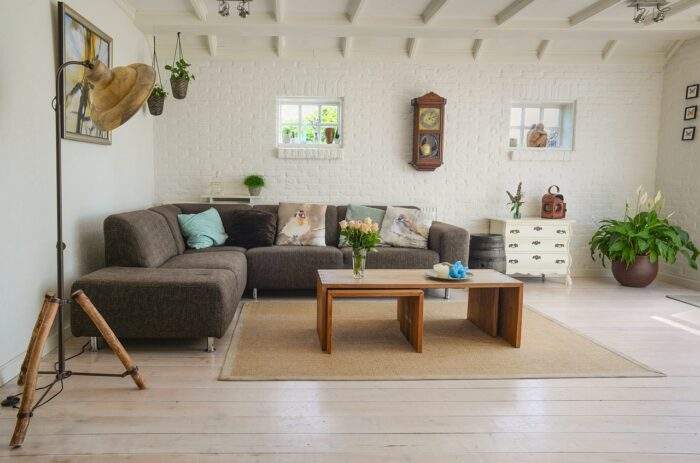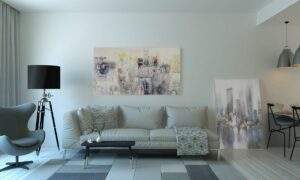Harnessing Modern Interior Design Trends for Enhanced Living

The allure of modern interior design goes beyond the superficial, integrating finesse and functionality to create spaces that withstand the test of time and trends. In the realms of such design aesthetics, experts can infuse tranquility and practicality into your home or work environment. This article will provide invaluable insights into interior design, emphasizing current trends and inspiring you to create a space that reflects modern elegance and features that improve quality of life.
Key Takeaways:
- Discover the fundamental principles shaping modern interior design.
- Understand the role of color and the psychological impact it holds.
- Explore innovative material and technology trends within interiors.
- Learn how clever space utilization can transform living areas.
- Recognize the significance of natural light and biophilic design elements.
Table of Contents:
- Understanding the Essence of Modern Interior Design
- Color Palettes Dominating Current Design Trends
- Innovative Use of Materials and Textures
- Technology Integration in Today’s Interiors
- The Evolution of Space Utilization
- Lighting as a Central Component of Design
- Incorporating Biophilic Design Elements
- Accessibility in Modern Design
- Bold Patterns and Statement Pieces
- The Influence of Global Trends on Local Design
Understanding the Essence of Modern Interior Design
Modern interior design merges form with functionality, reflecting an appreciation for streamlined structures and an innate understanding of spatial dynamics. The essence of this design philosophy is rooted in the idea that beauty lies within simplicity and order. It’s an art form that values uncluttered spaces and emphasizes architectural elements without extensive ornamentation. Whether adopting an open floor plan to foster social interaction or selecting furnishings that speak to minimalism while providing comfort, the clear, clean lines and subdued color schemes synonymous with this style create a timeless appeal; these principles serve as a guiding beacon for industry leaders from heatherallendesigngroup.com who seek elegance in everyday environments.
Color Palettes Dominating Current Design Trends
Intricately tied to human emotions, color palettes profoundly affect interior design. Neutral tones serve as a canvas for creativity, allowing designers to introduce bold accents that can undoubtedly alter the mood of a space. Beyond aesthetics, these selections also play a psychological role by influencing feelings of warmth, relaxation, or vibrancy. The interplay between these colors can transform the spatial narrative of any room, inviting a sense of harmony or contrast as desired. The connection between color schemes and human psychology has been extensively studied, with research underscoring the importance of choosing hues that not only comply with design standards but also resonate with the personalities and lifestyles of the occupants.
Innovative Use of Materials and Textures
Today’s interior design landscape is experiencing a renaissance with the innovative use of materials and textures. While the interaction of various textures creates a multisensory experience, using natural elements like wood, stone, and metals offers an authentic, grounded feeling. Sustainable design is also at the forefront, emphasizing recycled materials and eco-conscious practices that appeal to the growing ethical consumer base. This attention to physical and environmental harmony elevates spaces with rich and tactile experiences that are visually appealing and sustainable.
Technology Integration in Today’s Interiors
The seamless integration of technology into interior design is one of the defining features of contemporary spaces. From bright lights that adjust according to mood and time of day to sophisticated sound systems that are heard but barely seen, these technological enhancements are reshaping our expectations of living and working spaces. Notably, most smart solutions now come in designs that complement the aesthetics of the interior, retaining the visual balance cherished by modern design. The infusion of such tech is not just about convenience but also about integrating elements that preserve and enhance the design integrity of the space.
The Evolution of Space Utilization
As living spaces are frequently redefined to meet the demands of modernity, the need for versatility has become imperative. Modern interior design addresses this by advocating for efficient and adaptable space utilization. Organically flowing environments that serve multiple purposes manifest the essence of contemporary living. Customizable furniture and ingenious storage solutions are crucial in achieving functionality without compromising style or space, illustrating how design can harmoniously adapt to lifestyle needs.
Lighting as a Central Component of Design
Lighting is a central component of interior design. It can enhance architectural details, create ambiance, and influence emotions within a space. Modern trends point towards layered lighting strategies that blend task, ambient, and accent lighting to sculpt and define interiors. Emphasizing natural light has also become increasingly desirable, with design layouts structured around maximizing daylight penetration, which imparts an energy-saving aspect and a focus on health and well-being in the lit environment.
Incorporating Biophilic Design Elements
Biophilic design is a transformative approach that taps into the innate human connection to nature. These designs foster a tranquil and refreshing atmosphere by incorporating natural elements such as living green walls, earthy palettes, and organic forms. For example, indoor plants revitalize spaces with vibrance and life, directly impacting air quality and personal well-being. The aim is to forge a subtle and intuitive bond between our urban lifestyle and the natural world, which enhances the visual appeal of spaces and contributes to occupants’ mental and physical health.
Accessibility in Modern Design
Ensuring accessibility within interior design reflects a society’s progress towards inclusivity. The modern design philosophy appreciates diversity and the universal need for ease and convenience. By applying principles catering to various abilities, designers can create welcoming and usable environments while reflecting a commitment to aesthetic excellence and innovation. This concept of inclusive design extends to the selection of furniture, the arrangement of spaces, and the use of technology that enhances livability for individuals of all ages and abilities.
Bold Patterns and Statement Pieces
Strategic use of bold patterns and statement pieces can serve as the charismatic heart of a room, drawing the eye and setting the tone for the entire interior narrative. Even in minimalistic settings, a well-curated selection of dramatic art or an audacious piece of furniture can provide a visual anchorage, injecting personality into the space. Expert designers balance these features with the understated elements of their surroundings, ensuring a bold yet harmonious aesthetic that fosters both comfort and conversation within the living environment.
The Influence of Global Trends on Local Design
Global influences are increasingly evident in local interior design aesthetics, with designers drawing inspiration from myriad cultural sources. This fusion of global motifs with personalized touches creates a rich tapestry that reflects the homeowner’s individuality and the multicultural influences of the broader society. These versatile trends and a deep appreciation for local craftsmanship and tradition result in worldly and intimately personalized spaces. The confluence of these influences enriches the design landscape, allowing for an eclectic yet cohesive blend of styles that bridge the gap between the global and the local vernacular.







